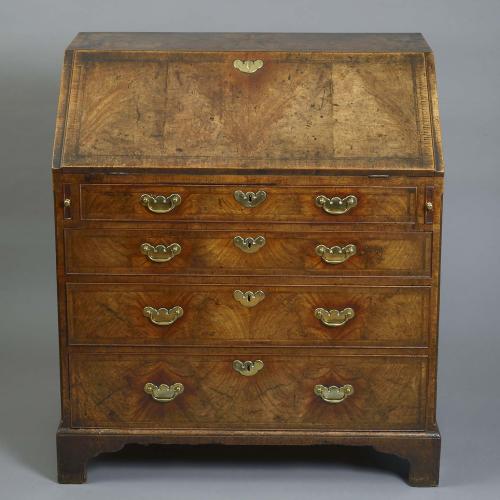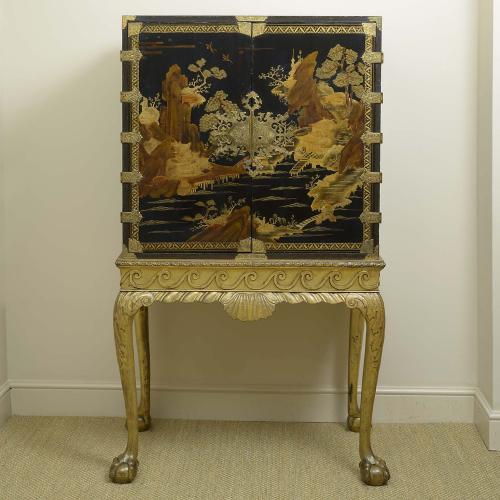

This object is eligible for a Certificate of BADA Provenance
The BADA Standard
- Since 1918, BADA has been the leading association for the antiques and fine art trade
- Members are elected for their knowledge, integrity and quality of stock
- Our clients are protected by BADA’s code of conduct
- Our dealers’ membership is reviewed and renewed annually
- Bada.org is a non-profit site: clients deal directly with members and they pay no hidden fees
Spanish Colonial
Early 17th Century
An elaborately carved walnut chest with traces of polychrome. The cassone-style lid with swept edge moulding. The front carved with a motif of scrolling foliage with flowers, birds and two figures, the sides carved variously with a figure flanked by two heraldic lions, and with a double-headed eagle. The interior is fitted with two compartments whilst the lid is painted with a black foliate motif on a red ground.
Although the shape of the lid is reminiscent of Italian cassone, or marriage chests, the style of the carving suggests instead that the chest originated somewhere in the Spanish colonies. The unusual heraldic lions in particular recall other Spanish colonial works and can be seen on South American embossed leather chests, for example. This idea is further supported by the inclusion of a double-headed eagle, symbolic of the Hapsburg family who were the rulers of Spain and the Spanish Empire in the 16th and 17th centuries.
Measurements: 16" (41 cm) High; 35" (89 cm) Wide; 19" (48 cm) Deep
The BADA Standard
- Since 1918, BADA has been the leading association for the antiques and fine art trade
- Members are elected for their knowledge, integrity and quality of stock
- Our clients are protected by BADA’s code of conduct
- Our dealers’ membership is reviewed and renewed annually
- Bada.org is a non-profit site: clients deal directly with members and they pay no hidden fees





